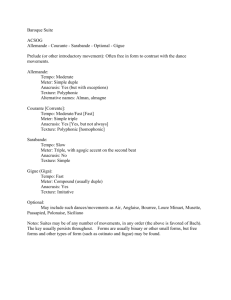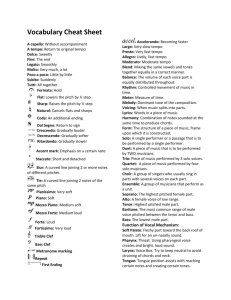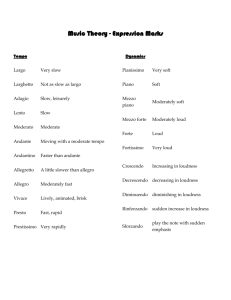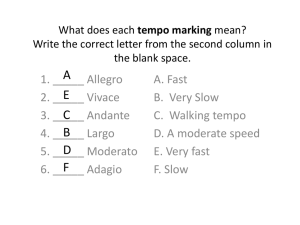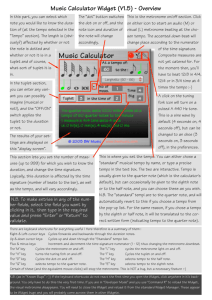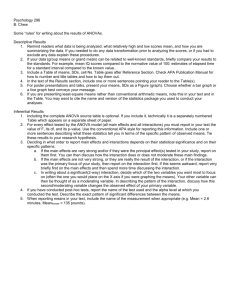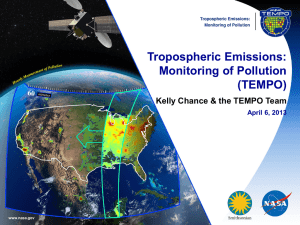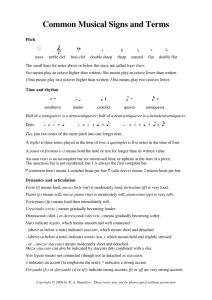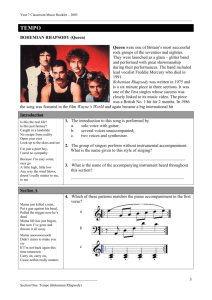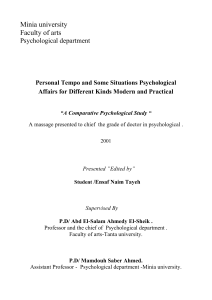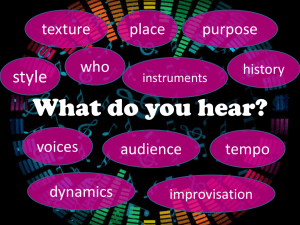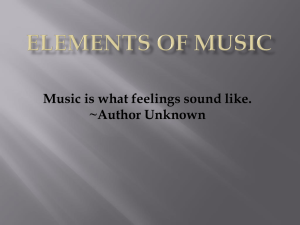slides
advertisement
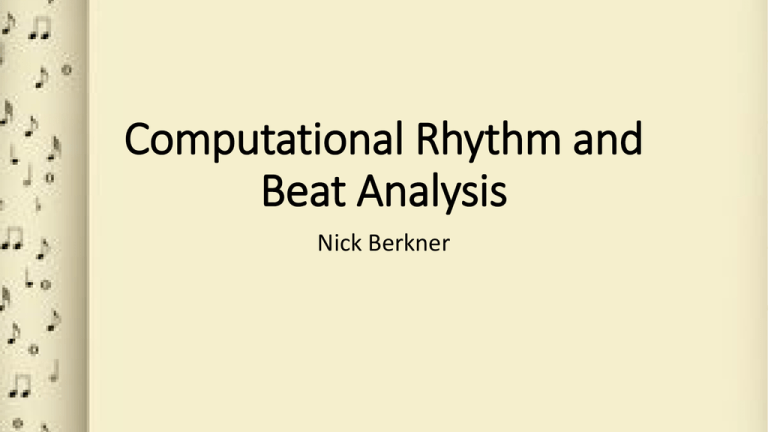
Computational Rhythm and Beat Analysis Nick Berkner Goals • Develop a Matlab program to determine the tempo, meter and pulse of an audio file • Implement and optimize several algorithms from lectures and sources • Apply algorithm to a variety of musical pieces • Objective and Subjective analysis of results • By studying which techniques are successful for different types of music, we can gain insight to a possible universal algorithm Motivations • Music Information Retrieval • Group music based on tempo and meter • Musical applications • Drum machines • Tempo controlled delay • Practice aids Existing Literature • Perception of Temporal Patters • Dirk-Jan Povel and Peter Essens • Tempo and Beat Analysis of Acoustic Musical Signals • Eric D. Scheirer • Pulse Detection in Synchopated Rhythms using neural oscillators • Edward Large and Marc J. Velasco • Music and Probability • David Temperley Stage 1 • Retrieve note onset information from audio file • Extracts essential rhythmic data while ignoring useless information • Variation of Scheirer’s method • Onset Signal • Same length as input • 1 if onset, 0 otherwise • Duration Vector • Number of samples between onsets • Create listenable onset file Ensemble Issues • Different types of sounds have different amplitude envelopes • Percussive sounds has very fast attack • This leads to the envelope having higher derivative • When multiple types of sounds are present in an audio file, those with fast attack rates tend to overpower others when attempting to find note onsets • Can use a bank of band pass filters to separate different frequencies • Different thresholds can be used so that the note onsets of each band can be determined separately and then added Finding Note Onsets Envelope Detector Further Work • Algorithm to combine onsets that are very close • Optimize values for individual musical pieces • Modify threshold parameters • Smoothen the derivative (low pass filter) • Explore other methods • Energy of Spectrogram Stage 2 • Determine tempo from note onsets • Uses customized oscillator model • Comb Filters have regular peaks over entire frequency spectrum • Only “natural” frequencies (0-20Hz) apply to tempo • Multiply onset signal with harmonics and subharmonics of pulse frequency and sum the result • Tempo = 60*frequency • The tempo of the piece will result in the largest sum • Perform over range of phases to account for delay in audio Finding Tempo • Tempos that are integer multiples of each other will share harmonics • Tempo range = 60-120 BPM (1-2 Hz) • The tempo and phase can be used to create audio for a delayed metronome for evaluation 97.2 BPM Further Work • Implement neural oscillator model • Non-linear resonators • Apply peak detection to result • Can also be used to find meter • Explore other methods • Comb filters and autocorrelation • Use derivative rather than onsets Quantization • Required for implementation of Povel-Essens model • Desain-Honing Model • Simplified approach • Since tempo is known, we can simply round each duration to the nearest common note value • For now assume only duple meter metrical values (no triplets) • Example: Duration = 14561, Tempo = 90 BPM, Sample Rate = 44100 Hz • Tempo frequency = 90/60 = 1.5 • Quarter = 44100/1.5 = 29400 samples, Eighth = 14700, Sixteenth = 7350 • Eighth note Stage 3 • Determine the meter of a piece • The time signature of a piece is often somewhat subjective so the focus is on choosing between duple or triple meter • Povel-Essens Model • Probablisitic Model Evaluating Performance • Test samples • • • • Genres: Rock, Classical Meter: Duple, Triple, Compound (6/8) Instrumentation: Vocal, Instrumental, Combination Control: Metronome • Greatest challenge seems to be Stage 1, which effects all subsequent stages, and is also effected the most by differences in genre and instrumentation. • Versatility vs. Accuracy
